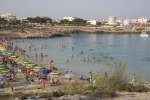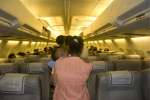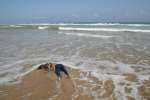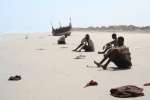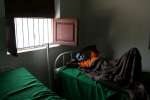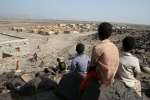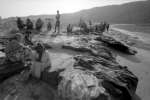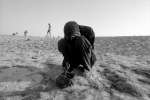Time running out to resolve refugee emergency in Europe
News Stories, 18 September 2015
GENEVA, Sept 18 (UNHCR) – Following yesterday's mayhem on the Serbian border with Croatia, which has closed some entry points, the UN refugee agency today issued a stark warning that time was running out for Europe to resolve the current refugee crisis.
UNHCR blamed the continuing absence of a coherent and united response to Europe's refugee situation as the main reason for the chaos and confusion on the Serbian border with Croatia yesterday and today and the dramatic scenes on Wednesday on the Hungarian border.
"With more than 442,440 refugees and migrants having arrived via the Mediterranean so far this year, some 2,921 deaths, and 4,000 people arriving on the Greek islands daily, the crisis is growing and being pushed from one country to another without solution," UNHCR spokesperson Adrian Edwards told a press briefing in Geneva.
He added that the suffering and risks for thousands of refugees and migrants were meanwhile increasing as uncertainty and a lack of information fuels desperation, raises the likelihood of further incidents, and stokes hostility towards people who have fled persecution and conflict and are in need of help.
"This environment is fertile ground for people-smugglers and others seeking to prey on this vulnerable population," he declared.
Edwards stressed that against the context of these events UNHCR believed Thursday's decision of the European Parliament to back plans for the relocation of an additional 120,000 people to all countries of the European Union deserved applause.
He said an Extraordinary Justice and Home Affairs Council meeting called for September 22, and the European Council meeting that has been slated for the following day (September 23) would now be crucially important for coming to agreement. "These occasions may be the last opportunity for a positive, united and coherent European response to this crisis. Time is running out," Edwards noted.
UNHCR recognizes that Europe is struggling to deal with this situation, and commends the countries and their citizens that have shown willingness to resettle refugees and respond positively to a situation which although challenging is manageable, provided that Europe is united in contributing to an effective response.
UNHCR itself this week proposed a number of measures towards the wider goal of helping Europe to collectively resolve this situation, namely:
- immediate creation of facilities in Greece to receive, assist, register and screen people arriving
- immediate start of a process, from Greece and from existing centres in Italy, for the relocation of 40,000 refugees agreed to by the Council to participating EU countries. This should be expanded by additional voluntary pledges by EU states against the new proposals of the European Commission
- an emergency package from the EU to Serbia to establish a similar capacity to properly assist, register and relocate people to other European countries
- in parallel, UNHCR urges that there be a substantial increase in opportunities for Syrian refugees hosted in neighbouring countries to Syria to access legal channels to the EU including enhanced resettlement and humanitarian admission, family reunification and humanitarian and student visas.











